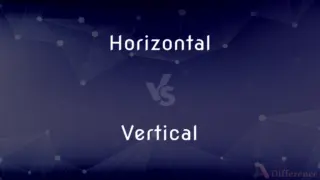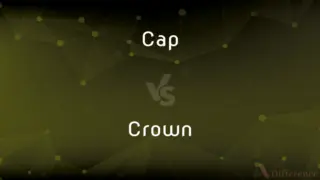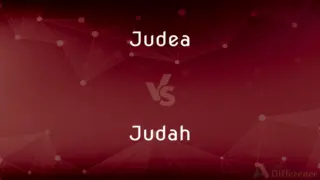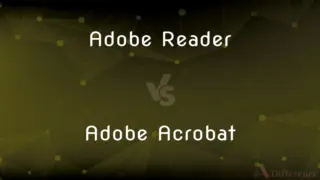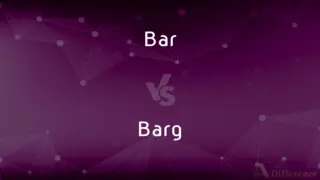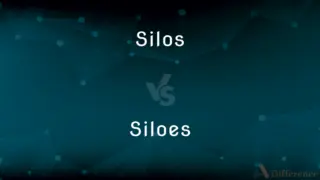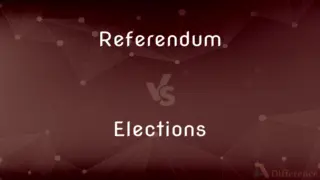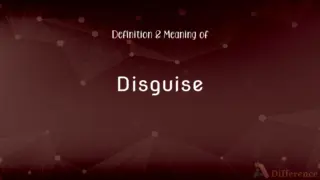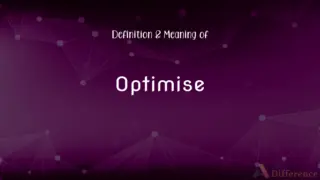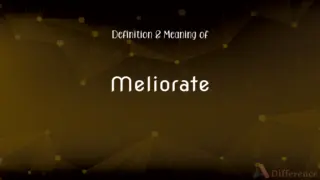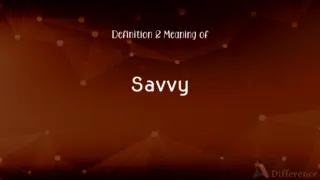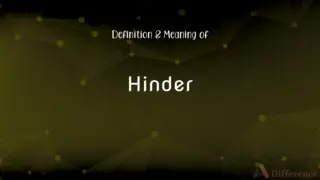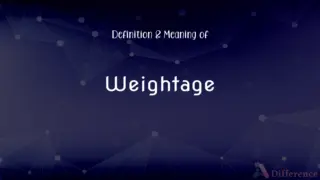Client vs. Principal — What's the Difference?
By Maham Liaqat & Urooj Arif — Updated on March 30, 2024
A client is an individual or entity that engages the professional services of another, while a principal is a primary party to a transaction, acting on their own behalf.

Difference Between Client and Principal
Table of Contents
ADVERTISEMENT
Key Differences
A patent is a legal mechanism that grants inventors exclusive rights to their inventions for a specific period, typically 20 years from the filing date, allowing them to prevent others from making, using, or selling the invention without permission. Whereas copyright is a form of protection provided by the laws of the United States to the creators of "original works of authorship," including literary, dramatic, musical, and certain other intellectual works, both published and unpublished, offering protection the moment the work is created and fixed in a tangible form that is perceptible either directly or with the aid of a machine or device.
Patents are often associated with inventions and innovations in the field of technology, engineering, or any other domain where a new process, machine, manufacture, or composition of matter can be developed. On the other hand, copyright primarily relates to creative expressions such as books, music, movies, software, and artwork, focusing on the content rather than its utility.
To obtain a patent, the inventor must publicly disclose the details of the invention, effectively sharing the innovation with the world in exchange for the temporary monopoly. Copyright, in contrast, does not require any registration or explicit public disclosure to take effect, though registration can provide additional legal benefits.
The process of obtaining a patent involves a rigorous examination by a patent office to ensure the invention is new, useful, and non-obvious. Meanwhile, copyright protection is automatic and does not require such examination, assuming the work is original and has been fixed in a tangible form.
While patents expire after a fixed period and the invention enters the public domain, copyright offers a longer duration of protection, typically the life of the author plus 70 years for works created after 1978, after which the work also becomes public domain.
ADVERTISEMENT
Clients are those who seek out the services of professionals such as lawyers, consultants, and contractors, entrusting them with specific tasks or projects. The relationship between a client and a service provider is based on trust, mutual benefit, and the understanding that the provider will act in the client's best interest within the scope of their engagement. Principals, in contrast, are individuals or entities that are the main parties in a transaction or agreement. They are not third parties but rather the ones for whom the action is directly being taken or who are directly involved in a contractual agreement.
While a client hires services, a principal may hire an agent (such as a broker or representative) to act on their behalf, making decisions and performing actions that bind the principal legally. This difference highlights the client's role in seeking expertise and the principal's role in authorizing others to act in their stead, carrying the responsibility and authority in transactions or agreements.
The relationship dynamics also differ. Clients may have a more passive role, relying on the expertise of the professional they have hired, whereas principals are actively involved in decision-making, with their agents acting as extensions of their will. However, both clients and principals expect their chosen professionals or agents to act in their best interests, adhering to agreed-upon terms and ethical standards.
In legal contexts, the term "principal" can carry specific implications, denoting the primary party who has engaged an agent under the law of agency, thereby granting the agent authority to perform acts on the principal's behalf. Clients, while they may engage services for legal representation or advice, do not necessarily confer this type of authority on the professionals they hire.
The distinction between a client and a principal becomes particularly relevant in scenarios involving representation or transactions. For example, in real estate, a client might seek the services of an agent to find a property, while the principal in a transaction (the buyer or seller) directly engages in the contract of sale, with the real estate agent acting on the principal's behalf under specific authorization.
Comparison Chart
Protection Object
Inventions (processes, machines, etc.)
Original works of authorship (books, music, etc.)
Duration
20 years from filing date
Life of author + 70 years (post-1978 works)
Disclosure
Required (public disclosure of details)
Not required (automatic upon creation)
Registration
Required for protection
Not required, but offers legal benefits
Examination
Yes, by patent office
No examination required
Definition
An individual or entity engaging professional services.
A main party in a transaction, acting on their own behalf.
Relationship
Engages services based on trust and expertise.
Hires an agent to act on their behalf in transactions or agreements.
Role in Action
Seeks expertise and delegates specific tasks.
Directly involved or authorizes actions in their own interest.
Legal Authority
Limited to the scope of service engagement.
May delegate legal authority to agents to act on their behalf.
Expectation
Expects professional service and advice.
Expects agents to act in their best interest according to their instructions.
Compare with Definitions
Client
Focused on technological and functional innovations.
The new manufacturing process was patented.
Principal
Protects original works of authorship.
Her novel was protected by copyright upon publication.
Client
Often relies on professional advice and services.
The clients of the financial advisor sought strategies for wealth management.
Principal
The primary party in a legal or financial transaction.
In the sale of a property, the seller acts as the principal.
Client
An entity or individual that seeks the services of a professional.
She became a client of the law firm to navigate her legal issues.
Principal
Automatically applies upon creation.
The photographer owns the copyright to the image immediately.
Client
Engages in a professional relationship based on the need for expertise.
As a client of the architectural firm, he expected innovative design solutions.
Principal
Bears the ultimate responsibility for the actions taken by their agent.
As the principal, she was liable for the decisions made by her legal representative.
Client
Does not directly involve in transactions but hires services.
Business clients hire consulting firms to improve operational efficiency.
Principal
Does not require registration.
His software code was copyrighted even without filing with the office.
Client
A legal right granted for an invention.
The company secured a patent for its innovative solar panel.
Principal
Has the authority to make decisions impacting the outcome of transactions.
The principal decided the terms under which the merger would proceed.
Client
Requires a detailed application process.
The inventor spent months preparing the patent application.
Principal
Directly engages in contracts or agreements.
Principals in a business venture enter into partnership agreements.
Client
Has specific needs or goals to be addressed by a service provider.
Clients of the advertising agency look for creative campaigns to boost sales.
Principal
Covers a wide range of creative works.
Copyright laws protect music, literature.and art.
Client
Grants protection for a limited time.
After 20 years, the patent on the medication expired.
Principal
May delegate authority to an agent to act on their behalf.
The principal authorized the broker to negotiate deals.
Client
Exclusive rights to commercialize an invention.
Holding a patent means you can sue infringers.
Principal
First in order of importance; main
The country's principal cities
Client
A person or organization using the services of a lawyer or other professional person or company
Insurance tailor-made to a client's specific requirements
Principal
Denoting an original sum invested or lent
The principal amount of your investment
Client
(in a network) a desktop computer or workstation that is capable of obtaining information and applications from a server
Workstation clients are going to be easy to install
Principal
The most important or senior person in an organization or group
A design consultancy whose principal is based in San Francisco
Client
(in ancient Rome) a plebeian under the protection of a patrician.
Principal
A sum of money lent or invested, on which interest is paid
The winners are paid from the interest without even touching the principal
Client
The party for which professional services are rendered, as by an attorney.
Principal
A person for whom another acts as an agent or representative
Stockbrokers in Tokyo act as agents rather than as principals
Client
A customer or patron
Clients of the hotel.
Principal
The person directly responsible for a crime.
Client
A person using the services of a social services agency.
Principal
A main rafter supporting purlins.
Client
One that depends on the protection of another.
Principal
An organ stop sounding a main register of open flue pipes typically an octave above the diapason
All the principals are on one manual
Client
A client state.
Principal
First or highest in rank or importance.
Client
(Computers) A computer or program that can download files for manipulation, run applications, or request application-based services from a file server.
Principal
Of, relating to, or being financial principal, or a principal in a financial transaction.
Client
A customer, a buyer or receiver of goods or services.
Principal
One who holds a position of presiding rank, especially the head of an elementary school, middle school, or high school.
Client
(computing) The role of a computer application or system that requests and/or consumes the services provided by another having the role of server.
Principal
A main participant in a situation, especially a financial transaction.
Client
A person who receives help or services from a professional such as a lawyer or accountant.
Principal
A person having a leading or starring role in a performance, such as the first player in a section of an orchestra.
Client
(legal) A person who employs or retains an attorney to represent him or her in any legal matter, or one who merely divulges confidential matters to an attorney while pursuing professional assistance without subsequently retaining the attorney.
Principal
An amount of capital originally borrowed or invested, as opposed to the interest paid or accruing on it.
Client
A citizen who put himself under the protection of a man of distinction and influence, who was called his patron.
Principal
The most significant part of an estate, as opposed to minor or incidental components.
Client
A dependent; one under the protection of another.
I do think they are your friends and clients,And fearful to disturb you.
Principal
The person on behalf of whom an agent acts.
Client
One who consults a legal adviser, or submits his cause to his management.
Principal
The person having prime responsibility for an obligation as distinguished from one who acts as surety or as an endorser.
Client
A person who seeks the advice of a lawyer
Principal
The main actor in the perpetration of a crime.
Client
Someone who pays for goods or services
Principal
(Architecture) Either of a pair of inclined timbers forming the sides of a triangular truss for a pitched roof.
Client
(computer science) any computer that is hooked up to a computer network
Principal
Primary; most important; first level in importance.
Smith is the principal architect of this design.
The principal cause of the failure was poor planning.
Principal
Of or relating to a prince; princely.
Principal
(mathematics) Chosen or assumed among a branch of possible values of a multi-valued function so that the function is single-valued.
Two is the principal square root of 4. Both −2 and +2 are square roots of 4.
Principal
The money originally invested or loaned, on which basis interest and returns are calculated.
A portion of your mortgage payment goes to reduce the principal, and the rest covers interest.
Principal
The chief administrator of a school.
Principal
The chief executive and chief academic officer of a university or college.
Principal
(legal) A legal person that authorizes another (the agent) to act on their behalf; or on whose behalf an agent or gestor in a negotiorum gestio acts.
When an attorney represents a client, the client is the principal who permits the attorney, the client′s agent, to act on the client′s behalf.
My principal sells metal shims.
Principal
(legal) The primary participant in a crime.
Principal
(North America) A partner or owner of a business.
Principal
(music) A diapason, a type of organ stop on a pipe organ.
Principal
The construction that gives shape and strength to a roof, generally a truss of timber or iron; or, loosely, the most important member of a piece of framing.
Principal
The first two long feathers of a hawk's wing.
Principal
One of the turrets or pinnacles of waxwork and tapers with which the posts and centre of a funeral hearse were formerly crowned
Principal
(obsolete) An essential point or rule; a principle.
Principal
A dancer at the highest rank within a professional dance company, particularly a ballet company.
Principal
(computing) A security principal.
Principal
Highest in rank, authority, character, importance, or degree; most considerable or important; chief; main; as, the principal officers of a Government; the principal men of a state; the principal productions of a country; the principal arguments in a case.
Wisdom is the principal thing.
Principal
Of or pertaining to a prince; princely.
Principal
A leader, chief, or head; one who takes the lead; one who acts independently, or who has controlling authority or influence; as, the principal of a faction, a school, a firm, etc.; - distinguished from a subordinate, abettor, auxiliary, or assistant.
Principal
The chief actor in a crime, or an abettor who is present at it, - as distinguished from an accessory.
Principal
A thing of chief or prime importance; something fundamental or especially conspicuous.
Principal
The original amount of a debt on which interest is calculated
Principal
The educator who has executive authority for a school;
She sent unruly pupils to see the principal
Principal
An actor who plays a principal role
Principal
Capital as contrasted with the income derived from it
Principal
The major party to a financial transaction at a stock exchange; buys and sells for his own account
Principal
Most important element;
The chief aim of living
The main doors were of solid glass
The principal rivers of America
The principal example
Policemen were primary targets
Common Curiosities
Can ideas be patented?
No, patents protect the application of ideas, not the ideas themselves.
What does copyright protect?
Copyright protects original works of authorship, such as books, music, and art.
What are the requirements for a patent?
An invention must be new, useful, and non-obvious.
What is a patent?
A patent is a legal document granting the holder exclusive rights to an invention for a limited time.
Is copyright registration necessary?
No, copyright is automatic upon creation, but registration can provide additional legal benefits.
Can a patent be renewed?
No, once a patent expires, it cannot be renewed and the invention enters the public domain.
What happens when a patent expires?
The invention becomes public domain, allowing anyone to use it without permission.
How long does patent protection last?
Patent protection lasts for 20 years from the filing date.
How does one obtain a copyright?
Copyright protection is automatic upon the creation and fixation of the work.
Does copyright cover ideas?
No, copyright does not protect ideas, procedures, processes, or methods of operation.
What qualifies for copyright protection?
Any original work of authorship fixed in a tangible form of expression.
What responsibilities does a principal have?
A principal is responsible for the actions of their agent and must ensure they act within the scope of their authority.
Can a principal also be a client?
Yes, a principal can be a client if they engage professional services outside of agent-principal relationships.
How does an agent relate to a principal and client?
An agent acts on behalf of a principal in transactions or agreements, while they may provide services to a client in professional contexts.
What is the purpose of a patent?
To encourage innovation by granting inventors exclusive rights to their inventions.
Who grants patents?
Patents are granted by national patent offices.
Who can be a client?
Any individual or entity seeking professional services or advice can be a client.
What is the legal significance of being a principal?
Principals have legal obligations and rights in the context of contracts or transactions, including liability for actions taken on their behalf.
Why is the distinction between client and principal important?
It clarifies responsibilities, expectations, and the scope of authority in professional and transactional relationships.
What kind of authority might a principal grant an agent?
Principals can grant various levels of authority, from limited actions to broad decision-making powers.
Are copyrights transferable?
Yes, copyrights can be transferred, inherited, or sold.
How does one become a client?
By engaging the services of a professional or a company and agreeing to their terms of service.
What legal protections exist for principals and clients?
Various laws and regulations protect principals and clients, including those governing contracts, agency, and professional responsibility.
Can patents be sold or transferred?
Yes, patents can be sold, transferred, or licensed to others.
Can a client’s wishes always dictate a professional’s actions?
While professionals work to fulfill their clients' wishes, they must also adhere to legal and ethical standards, which can limit client directives.
Share Your Discovery

Previous Comparison
Dip vs. Hump
Next Comparison
Inspect vs. ReviewAuthor Spotlight
Written by
Maham LiaqatCo-written by
Urooj ArifUrooj is a skilled content writer at Ask Difference, known for her exceptional ability to simplify complex topics into engaging and informative content. With a passion for research and a flair for clear, concise writing, she consistently delivers articles that resonate with our diverse audience.

